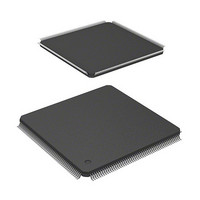HD6417709SF133B Renesas Electronics America, HD6417709SF133B Datasheet - Page 673

HD6417709SF133B
Manufacturer Part Number
HD6417709SF133B
Description
IC SUPERH MPU ROMLESS 208LQFP
Manufacturer
Renesas Electronics America
Series
SuperH® SH7700r
Datasheet
1.D6417709SBP167BV.pdf
(809 pages)
Specifications of HD6417709SF133B
Core Processor
SH-3
Core Size
32-Bit
Speed
133MHz
Connectivity
EBI/EMI, FIFO, IrDA, SCI, SmartCard
Peripherals
DMA, POR, WDT
Number Of I /o
96
Program Memory Type
ROMless
Ram Size
16K x 8
Voltage - Supply (vcc/vdd)
1.65 V ~ 2.05 V
Data Converters
A/D 8x10b; D/A 2x8b
Oscillator Type
Internal
Operating Temperature
-20°C ~ 75°C
Package / Case
208-LQFP
Lead Free Status / RoHS Status
Contains lead / RoHS non-compliant
Eeprom Size
-
Program Memory Size
-
Available stocks
Company
Part Number
Manufacturer
Quantity
Price
Company:
Part Number:
HD6417709SF133B
Manufacturer:
RENESAS
Quantity:
79
Company:
Part Number:
HD6417709SF133B
Manufacturer:
Renesas Electronics America
Quantity:
10 000
Part Number:
HD6417709SF133B
Manufacturer:
RENESAS/瑞萨
Quantity:
20 000
Part Number:
HD6417709SF133B-V
Manufacturer:
RENESAS/瑞萨
Quantity:
20 000
Part Number:
HD6417709SF133BV
Manufacturer:
RENESAS/瑞萨
Quantity:
20 000
- Current page: 673 of 809
- Download datasheet (5Mb)
20.4.3
Scan mode is useful for monitoring analog inputs in a group of one or more channels. When the
ADST bit in the A/D control/status register (ADCSR) is set to 1 by software or external trigger
input, A/D conversion starts on the first channel in the group (AN0 when CH2 = 0, AN4 when
CH2 = 1)). When two or more channels are selected, after conversion of the first channel ends,
conversion of the second channel (AN1 or AN5) starts immediately. A/D conversion continues
cyclically on the selected channels until the ADST bit is cleared to 0. The conversion results are
transferred for storage into the A/D data registers corresponding to the channels.
When the mode or analog input channel must be changed during analog conversion, to prevent
incorrect operation, first clear the ADST bit to 0 to halt A/D conversion. After making the
necessary changes, set the ADST bit to 1. A/D conversion will start again from the first channel
in the group. The ADST bit can be set at the same time as the mode or channel selection is
changed.
Typical operations when three channels (AN0 to AN2) in group 0 are selected in scan mode are
described next. Figure 20.5 shows a timing diagram for this example.
1. Scan mode is selected (MULTI = 1, SCN = 1), channel group 0 is selected (CH2 = 0), analog
2. When A/D conversion of the first channel (AN0) is completed, the result is transferred into
3. Conversion proceeds in the same way through the third channel (AN2).
4. When conversion of all the selected channels (AN0 to AN2) is completed, the ADF flag is set
5. Steps 2 to 4 are repeated as long as the ADST bit remains set to 1. When the ADST bit is
input channels AN0 to AN2 are selected (CH1 = 1, CH0 = 0), and A/D conversion is started
(ADST = 1).
ADDRA. Next, conversion of the second channel (AN1) starts automatically.
to 1 and conversion of the first channel (AN0) starts again. If the ADIE bit is set to 1, an ADI
interrupt is requested at this time.
cleared to 0, A/D conversion stops. After that, if the ADST bit is set to 1, A/D conversion
starts again from the first channel (AN0).
Scan Mode (MULTI = 1, SCN = 1)
Rev. 5.00, 09/03, page 627 of 760
Related parts for HD6417709SF133B
Image
Part Number
Description
Manufacturer
Datasheet
Request
R

Part Number:
Description:
KIT STARTER FOR M16C/29
Manufacturer:
Renesas Electronics America
Datasheet:

Part Number:
Description:
KIT STARTER FOR R8C/2D
Manufacturer:
Renesas Electronics America
Datasheet:

Part Number:
Description:
R0K33062P STARTER KIT
Manufacturer:
Renesas Electronics America
Datasheet:

Part Number:
Description:
KIT STARTER FOR R8C/23 E8A
Manufacturer:
Renesas Electronics America
Datasheet:

Part Number:
Description:
KIT STARTER FOR R8C/25
Manufacturer:
Renesas Electronics America
Datasheet:

Part Number:
Description:
KIT STARTER H8S2456 SHARPE DSPLY
Manufacturer:
Renesas Electronics America
Datasheet:

Part Number:
Description:
KIT STARTER FOR R8C38C
Manufacturer:
Renesas Electronics America
Datasheet:

Part Number:
Description:
KIT STARTER FOR R8C35C
Manufacturer:
Renesas Electronics America
Datasheet:

Part Number:
Description:
KIT STARTER FOR R8CL3AC+LCD APPS
Manufacturer:
Renesas Electronics America
Datasheet:

Part Number:
Description:
KIT STARTER FOR RX610
Manufacturer:
Renesas Electronics America
Datasheet:

Part Number:
Description:
KIT STARTER FOR R32C/118
Manufacturer:
Renesas Electronics America
Datasheet:

Part Number:
Description:
KIT DEV RSK-R8C/26-29
Manufacturer:
Renesas Electronics America
Datasheet:

Part Number:
Description:
KIT STARTER FOR SH7124
Manufacturer:
Renesas Electronics America
Datasheet:

Part Number:
Description:
KIT STARTER FOR H8SX/1622
Manufacturer:
Renesas Electronics America
Datasheet:

Part Number:
Description:
KIT DEV FOR SH7203
Manufacturer:
Renesas Electronics America
Datasheet:











